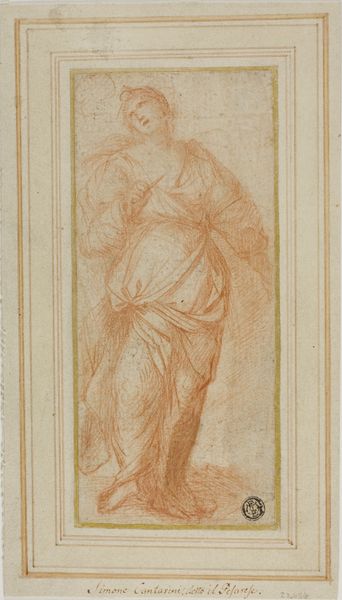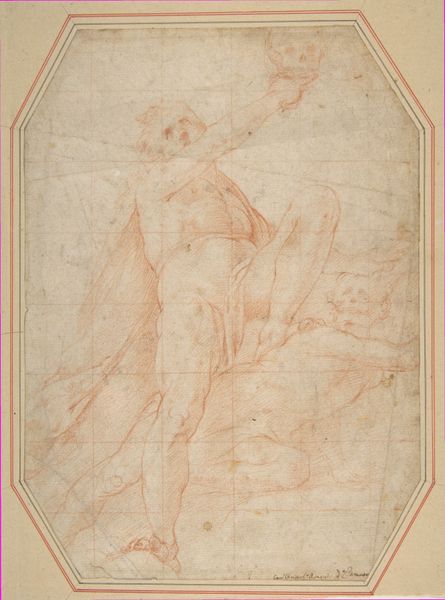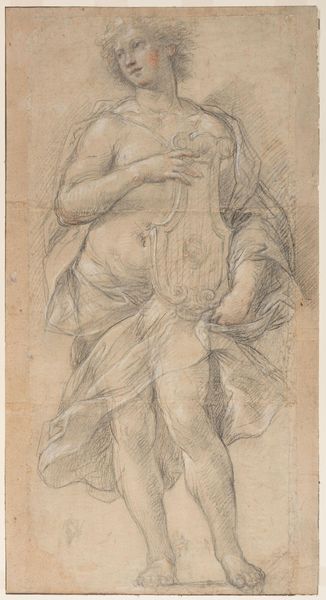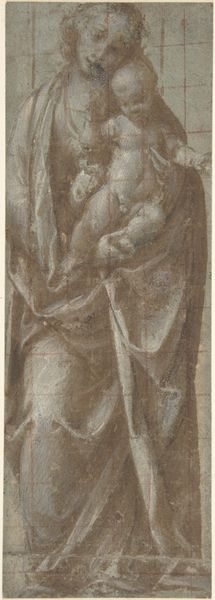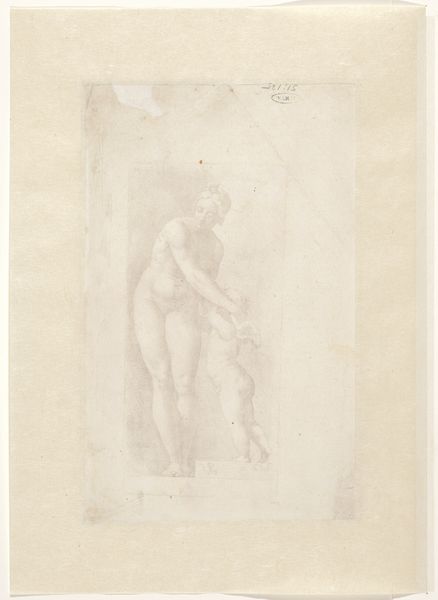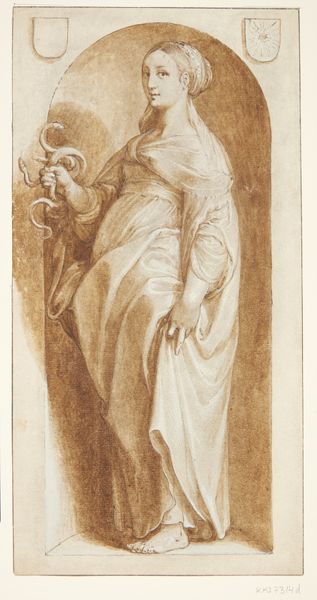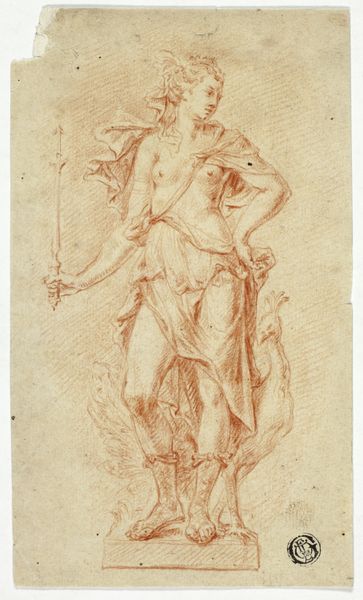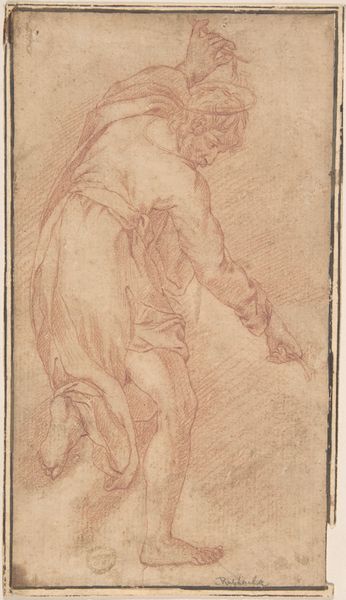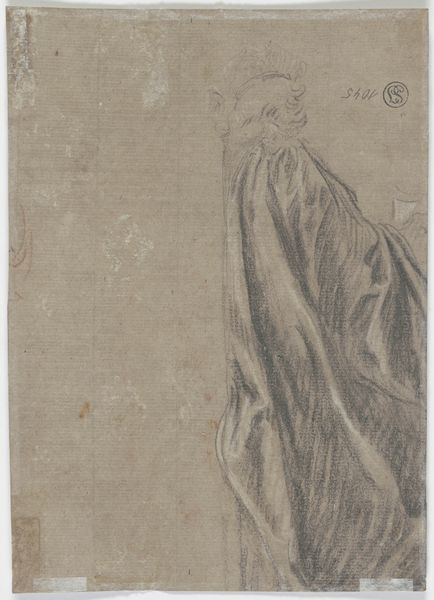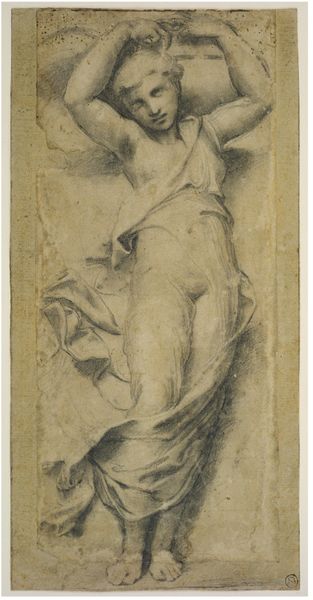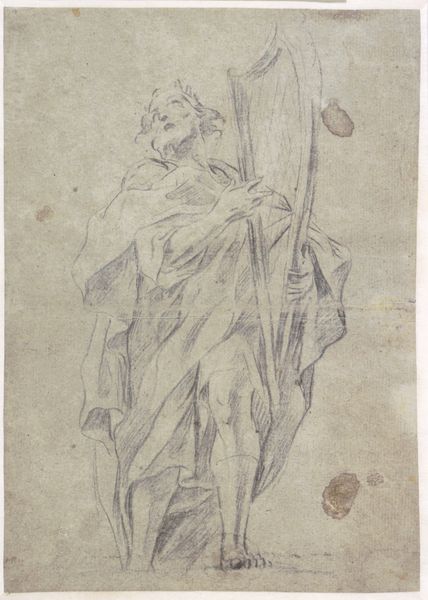
Standing Saint John the Baptist with The Lamb 1570 - 1581
0:00
0:00
drawing, coloured-pencil, print
#
portrait
#
drawing
#
coloured-pencil
# print
#
mannerism
#
figuration
#
coloured pencil
#
line
#
history-painting
Dimensions: sheet: 11 5/16 x 4 7/8 in. (28.7 x 12.4 cm)
Copyright: Public Domain
Editor: This drawing, "Standing Saint John the Baptist with The Lamb" by Girolamo Macchietti, was created sometime between 1570 and 1581, and it's currently housed at the Metropolitan Museum of Art. It appears to be colored pencil on paper, and something about the grid underlying the drawing gives it an ethereal, almost ghostly, quality. What resonates with you when you look at this work? Curator: The figure’s contrapposto stance, combined with the delicate medium, speaks volumes about cultural memory and the layered interpretations of religious iconography. Consider how Saint John the Baptist is often represented, a wild man of the desert, but here he possesses a composed, almost melancholic air. Notice the lamb at his feet; traditionally, the Agnus Dei, symbolizing Christ’s sacrifice. Its presence links John directly to salvation, but the drawing's somewhat muted tones give me a sense of quiet introspection. The grid beneath the drawing introduces a layer of meaning about the status of art during this period, or even an implication for future viewers that all we see if merely one layer of representation. What might this suggest about Macchietti’s view on faith? Editor: That's a fascinating point. It hadn't occurred to me to read the grid as a comment on representation itself, instead of just as a tool the artist might use. Curator: The Mannerist style embraced artifice and complexity, consciously playing with symbolism and historical knowledge. Macchietti's Baptist isn’t a straightforward devotional image, it seems. It's almost as though he is inviting us to participate in unraveling the deeper meaning. This echoes a broader Mannerist sensibility – how the artist is always thinking of their audience. Editor: So it is a prompt to analyze established interpretations? It really alters my perspective on what this imagery aims to achieve. I hadn't really thought about how intentional the artist was when picking and placing all of the separate representational aspects of the art! Curator: Exactly. And the true beauty lies in this deliberate construction, revealing the layers of meaning embedded in familiar symbols, isn't it? It moves me to look more at older, familiar art through this type of intentional lens!
Comments
No comments
Be the first to comment and join the conversation on the ultimate creative platform.
